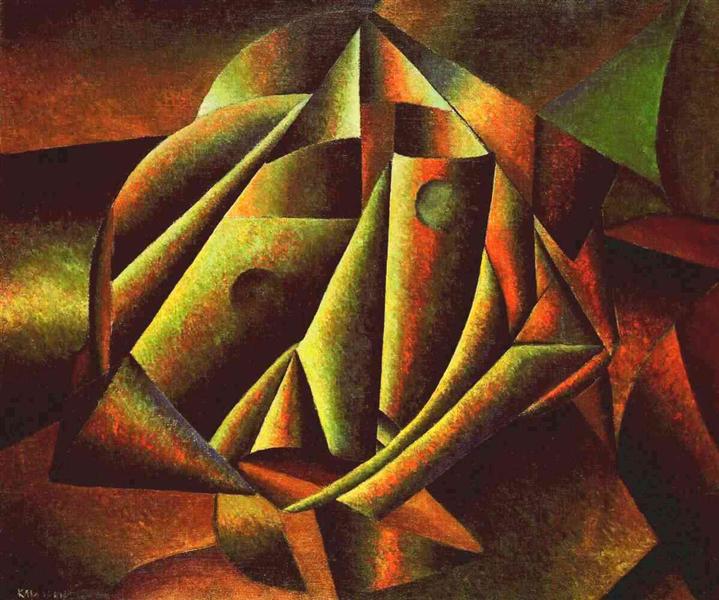Description
Kazimir Malevich, a central figure of the art of the twentieth century, is known for its fundamental contribution to the development of suprematism, an artistic movement that is characterized by pure geometric abstraction and an emphasis on feeling rather than in objective representation. However, his work "head of a peasant" made in 1913, is in a period prior to its full suprematist development, offering a window to its stylistic and conceptual evolution.
Observing the painting "head of a peasant", we find a curious fusion of cubist and primitivist elements. The central figure, a peasant, is characterized by the fragmentation of its factions and the use of color in a way that evokes the influence of Cubism, especially the analytical cubism developed by Picasso and Braque. Faces are decomposed and segmented geometric shapes overlap in a way that suggests multiple perspectives simultaneously.
The use of color in this work is significant and provides the emotional dimension that is characteristic of Malevich's art. The rustic ocher terrible tones, brown, oranges embrace the representation of the peasant figure, suggesting a connection with the earth and a simple and humble life. However, the flashes of red and blue add a vibration and emotional vitality that goes beyond a mere literal representation. The chromatic palette could also be interpreted as a reflection on the tumultuous life of Russian peasants in the pre-refolutionary era, a recurring theme in several works by Malevich.
The composition of the work stands out for its simplicity and direct approach. The head of the peasant occupies the center of the pictorial space, a decision that emphasizes the importance of the subject. The angular lines and the geometric shapes that make up the face and the headdress of the peasant create a balance between the figurative and the abstract. This approach causes the viewer to be forced to confront the essence of the image, while simultaneously it is attracted by the complexity of juxtaposed forms.
The influence of Russian popular art and religious iconography can also be traced into a "head of a peasant." The frontality of the figure and intensity of his gaze recalls the traditional representations of the orthodox icons, but here they are reconfigured through the prism of European modernism.
In the context of Malevich's career, this work represents a transition phase before its total immersion in suprematism. Their paintings Subsequent, such as "Black Square" (1915), they abandon every reference to nature and focus on the pure form. "Head of a peasant", therefore, offers a rich mix of influences and an introspective look at Malevich's ability to synthesize different artistic currents in his own visual language.
In conclusion, "head of a peasant" of Kazimir Malevich is a work that encapsulates a moment of transformation both in the artist's life and in the history of art. The painting not only suggests a meditation on the essence of the human being, but also an exploration of the expressive potential of the form and color that preludes the radical innovations for which Malevich would be universally recognized.
KUADROS ©, a famous paint on your wall.
Hand-made oil painting reproductions, with the quality of professional artists and the distinctive seal of KUADROS ©.
Art reproduction service with satisfaction guarantee. If you are not completely satisfied with the replica of your painting, we refund your money 100%.

